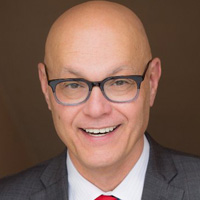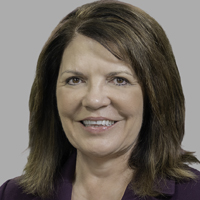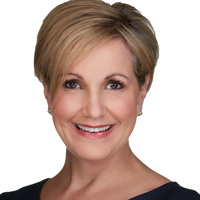Reporter Safety A Story That Won’t Go Away
At 3:15 p.m. on Jan. 6, 2021, reporter Chad Pergram delivered a pointed and sobering message to Fox News viewers: “This is the most significant breach of an American government institution since the Battle of Bladensburg, August 24th, 1814, when the British came and burned the Capitol and also burned the White House.”
His remarks about the historic Capitol insurrection emanated from a small studio the network had been using throughout the COVID-19 pandemic. The space had given Pergram and his colleagues a chance to cover the Hill during a most consequential campaign season when circumstances made such work perhaps more challenging than ever.
But on that day, the studio — located in the basement of the very building that was under siege by Trump supporters, its doors barricaded, its windows covered by coats — could have turned into a death trap. Such harrowing scenarios have apparently become something of an uncomfortable norm for journalists, with reports of physical attacks against them skyrocketing over the course of this past year, compelling industry leaders to become extra-vigilant when it comes to safety.

Fox News reporter Chad Pergram on covering the Capitol insurrection on Jan. 6: “There were a couple plans that I had in my head, a couple places you could go to hide, and also a tunnel that goes to the Library of Congress, underground, that if I had to I could probably get out that way.”
“You have riots and demonstrations that periodically get out of control,” Pergram, Fox News’ Congressional correspondent, says. “But the idea that you have the Vice President in the building, presiding over the Senate, the Speaker in the building, and they’re certifying the Electoral College [during a joint session of Congress], I’m not sure that everybody understands the import of that and therefore the severity of what happened.”
Officials were evacuated. A Capitol policeman and a rioter were killed amid the violence. Pipe bombs were recovered from the area and dozens of arrests were made as local police and National Guard soldiers restored order.
However, Pergram was able to broadcast measured reports throughout the day and deep into the night from inside of the Capitol Building because, all along, he was confident he could ultimately keep himself and his crew safe.
“There were a couple plans that I had in my head, a couple places you could go to hide,” Pergram says, “and also a tunnel that goes to the Library of Congress, underground, that if I had to I could probably get out that way.”
Knowledge of such escape routes comes with Pergram’s nearly 30 years of experience covering Capitol Hill. But such keen awareness is something that every TV news reporter must bring with them into the field today.
‘Staggering’ Attacks on Journalists
“Never has it been a more dangerous time to be a journalist in the modern history of the United States than it is right now,” says Dan Shelley, executive director of the Radio Television Digital News Association (RTDNA).
In addition to sponsoring the Edward R. Murrow awards, the RTDNA also conducts safety training as well as research. In a recent RTDNA survey of nationwide newsrooms, more than one-fifth of TV newsrooms disclosed that at least one attack was made on an employee in 2020.
Shelley calls that number “staggering,” and evidence of field reporter peril doesn’t end there.

Dan Shelley
The Reporters Committee For Freedom of the Press, another advocacy group that also provides legal services, released a reporter safety study of its own, which indicated that 438 journalists had been physically attacked last year — more than three times the number of assaults on journalists recorded the previous three years combined.
“What we’re hearing from journalists is that they feel like being visibly identified as press, which has always been a best practice [for safety], makes them feel like they have a bullseye, that they’ve got a target on their backs,” says Sarah Matthews, senior staff attorney at the Reporters Committee. “It’s just a more hostile environment.”
Though distrust in the media was already on the rise before Donald Trump announced his candidacy for president and began his rhetorical war against journalists, Shelley says the RTDNA has since seen “a dramatic uptick in the number of threats, cases of harassment, assault and arrests of journalists.”
“And it persists to this day,” he adds.
The Anti-Media Toll
Matthews also partially attributes the “shocking” number of attacks on journalists, be they physical, verbal or of the social media variety, to the now “years of public officials” — not limited to former President Trump — “verbally attacking members of the news media, and trying to undermine credible, legitimate reporting by calling it ‘fake news,’ by calling members of the media ‘enemies of the people.’ ”
“It just takes a toll,” Matthews continues, “and there’s a trickle-down effect where you start seeing people on the ground repeating this anti-media language.”
All this tension served as a backdrop to the coverage of 2020’s generational news events, including the election, the pandemic and, of course, the social justice protests.
Matthews says, in a way, it “makes sense that with the increase in protests” there would be some surge in violations of reporter safety. “All the same, we didn’t previously see police targeting journalists at this level,” she adds. “That feels new.”
And it is.
According to the Reporters Committee study, in 2018, 11 journalists were arrested; two years ago, the figure was nine, but in 2020, 139 journalists were arrested. All but 10 of the arrests last year took place at social justice protests.
How such outcomes are even possible in a free society — with journalists often sporting press credentials, holding microphones and existing as part of a team that includes members who man bulky, expensive camera equipment — is beyond the RTDNA’s Shelley.

Sarah Matthews
“It has happened unwittingly,” Shelley says of reporter arrests. “But unfortunately, it’s far-too-often happened when the officers know, or have a reasonable degree of certainty, that the person they’re arresting is a journalist; they’re not a participant in any march or protest that may be going on.”
Journalists Victims Of ‘Kettling’?
One explanation for some of these arrests is the police tactic of “kettling,” when a team of officers surround a group of demonstrators and execute a mass detainment before making individual arrests of everyone in the crowd.
Last June, at the height of the social justice protest movement, and when kettling was being used by police departments across the country, USA Today called the tactic “controversial.” Article sources also said there’s evidence to suggest that kettling, in fact, escalates conflict.
Both Shelley and Matthews said some journalists who were arrested last year found themselves caught in a kettle while reporting on the protests.
Having A Plan In Place
Ruschell Boone, a field reporter for 17 years, currently with Spectrum News’ New York City cable news channel, NY1, avoided arrest and any bodily harm in 2020. But like Pergram at the Capitol, even though she says she was embedded in the social justice protests last year out of a desire to have viewers feel like they, too, were “inside” of them, both she and her crew were prepared for such work.
“Each night when we went to the protests, we had a discussion about what happens if we get separated, what happens if we start to see unfamiliar faces as the evening went on, what happens if we start to feel unsafe,” Boone says. “‘Do we pull out as a team?’ ‘Do we pull out individually?’ Those are all questions you have to have [answered] because you have to have a plan just in case.”
A rule of thumb for Boone and her crew, should chaos erupt into a stampede, for example, is to “hug the nearest tree.

Ruschell Boone
“Nobody’s gonna run into the tree,” Boone explains. “Or if we were in an area where they didn’t have a lot of trees: the nearest bodega, the nearest corner yard or corner store, or if we were on the street and we could see what was happening, we’d pick a color car where we’d meet up.”
Familiarity between a reporter and their crew can prove valuable as well. Boone says sometimes she can communicate with her photographer with a look, signaling to them when it’s time to leave an area where security feels uncertain.
Working In Teams
“Field crews need to immediately leave any scene where they don’t feel safe,” says Sandy Breland, SVP of local media at Gray Television. She says her company encourages its general managers to send employees out into the field in pairs or teams of three, to help better protect their safety.
“Stressing situational awareness” is another approach Gray takes, Breland says. “Knowing where you are at all times, potential exit routes, thinking strategically about where you park.”
Gray field reporters may be asked to stay in constant contact with their news directors; they might even pool resources with rival stations. Other “counterintuitive” safety measures — as Breland calls them, for they may go against reporter inclinations to “run where the action is” — include alternative approaches to coverage, such as drone shots or using smaller GoPro cameras.
“Live shots are not a given,” Breland says. Such decisions “should be made on a case-by-case basis,” by local news directors, she observes.

Sandy Breland
Gray also adheres to a safety policy that says if security is hired to help protect reporters and other employees, they must be unarmed. Security is on the scene to serve as an extra set of eyes and to de-escalate potential conflicts, Breland says, and “if there’s a sense that armed security is needed to send a crew in, then it’s not worth the risk, and we need to look for alternative ways to cover it,” with drones or a camera positioned atop a building, for example.
Such mindfulness is indicative of Gray’s belief that, according to Breland, employee safety is a “top priority.”
“It’s always been safety first,” Breland says. “Given the unprecedented attacks we’ve seen on journalists the past year, we approach those conversations more strategically now.”
Journalist Safety First
Ellen Crooke, SVP of news at Tegna, echoes this safety-first sentiment.
“We have this phrase at Tegna,” she says. “There is no story, there is no shot, there is no video, no picture, no interview that is more important than the health and safety of our journalists.”
Though she would not disclose specifics about field reporter safety protocols at Tegna, because, as she said, “sharing those details could keep them from being as safe as they need to be,” Crooke stresses that it is an area where the company has made robust investment, including the issuance of safety guidelines to employees and the coordination of safety training.
“We work tirelessly to keep from putting our journalists in harm’s way,” she says.
That’s a relief to an advocate like the RTDNA’s Shelley, who says many newsgroup leaders are proactive in this area of reporter safety and, “thank God,” don’t need to hear him evangelize about it.
“What I do say,” he continues, “is that ‘You serve your community, and you have a responsibility to seek and report the truth on behalf of your viewers, your listeners and your readers. But you must do so safely, and you must do so responsibly.’

Ellen Crooke
“If you get attacked, if you get arrested, if you get assaulted … you’re the victim in that situation, but even more important than that, so are your viewers, listeners and readers,” Shelley continues. “They are denied access to information about what public officials, police officers and others are doing in their name. And that’s the critical role of journalists.”
An Omnipresent Threat
For reporters like Boone and Pergram, though, concerns over safety in the field are nothing new.
“We’re covering a lot of stories that are not very pleasant, and sometimes we’re going to places where people don’t want us to be, but the story has to be told,” Boone says. “There can be a threat. That threat can happen very quickly. It can happen spontaneously.”
When asked if reporter safety is of a higher concern today than it’s been at any other time in recent history, Pergram recalls the shooting of Congressman Steve Scalise, an incident Pergram covered in sweats because it occurred on a baseball field close to his home, and he’d been exercising at a nearby gym when he first heard about the violence.
“I was called away from a wedding some years ago, when I got word that Gabby Giffords had been shot,” Pergram adds.
He remembers July 1998, when two Capitol police officers were shot and killed, not terribly far from where he was holed up 22 years later as an attempted insurrection unfolded above him.
The ’98 shooting led to the installation of a fence around the building, which remains in place to this day. But when the security measure first went up, Pergram likened it in a piece to something out of a war zone and compared Congressional reporters to war correspondents.
Considering all these events in totality, Pergram offers: “I hate to say it, I’ve been at this for a while now, but these things, unfortunately, happen on a regular basis.”
































Comments (1)
RustbeltAlumnus2 says:
June 22, 2021 at 8:57 am
When the focus of a story directly involves the source of the story, we can safely expect that the story is less likely to go away.